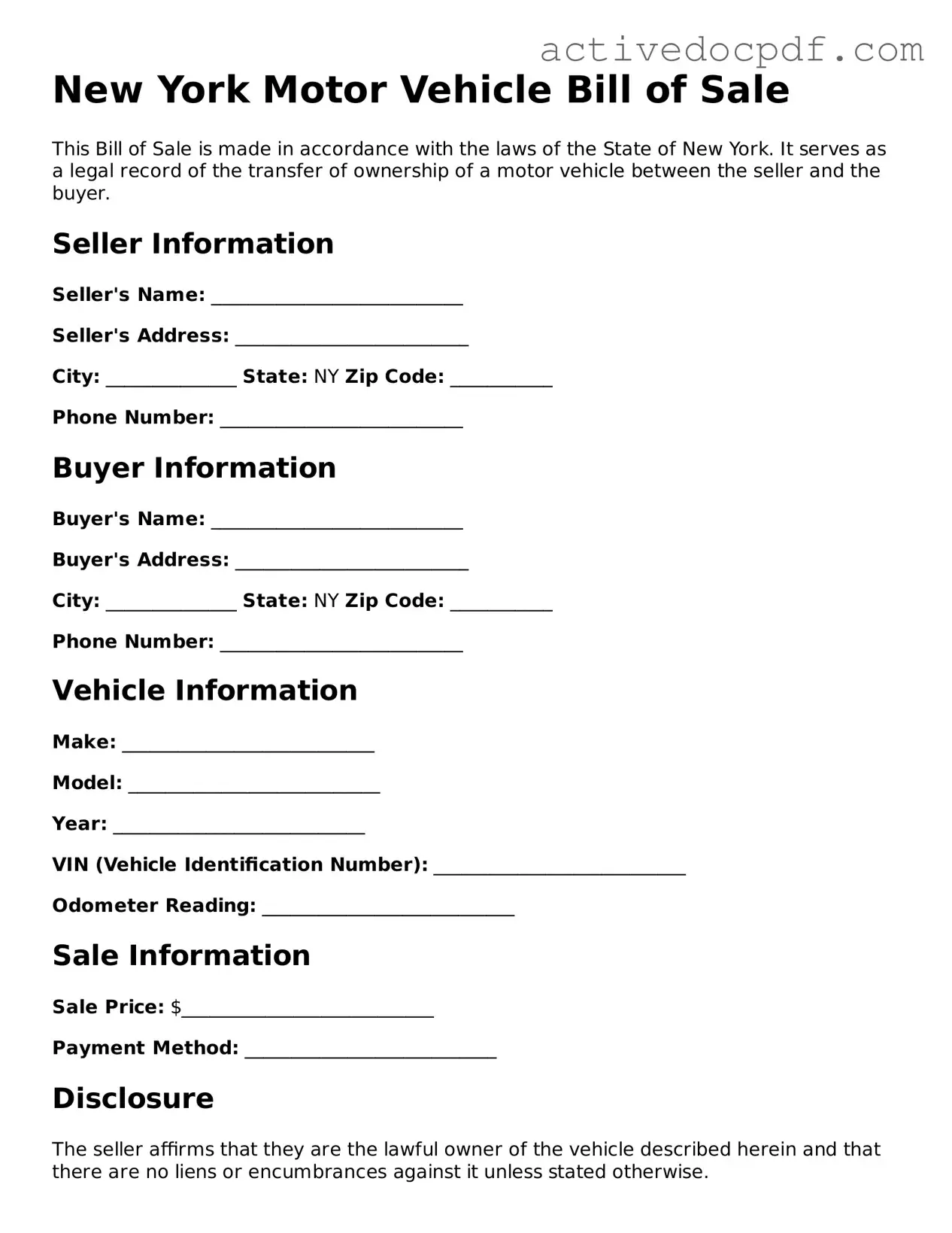What is a New York Motor Vehicle Bill of Sale?
A New York Motor Vehicle Bill of Sale is a legal document that records the sale of a vehicle between a buyer and a seller. This form serves as proof of the transaction and includes essential details such as the vehicle's make, model, year, Vehicle Identification Number (VIN), sale price, and the names and addresses of both parties involved. While not always required, it is highly recommended for both parties to protect their interests.
Is a Bill of Sale required to register a vehicle in New York?
In New York, a Bill of Sale is not strictly required for vehicle registration. However, it is advisable to have one, especially when purchasing a vehicle from a private seller. The Bill of Sale can provide evidence of ownership and support the transfer of title. When registering a vehicle, the Department of Motor Vehicles (DMV) typically requires a completed title and proof of identification.
The Bill of Sale should include the following information:
-
Full names and addresses of both the buyer and seller
-
Vehicle details, including make, model, year, and VIN
-
Sale price of the vehicle
-
Date of the transaction
-
Signatures of both parties
Including this information helps ensure clarity and can assist in resolving any disputes that may arise later.
Can a Bill of Sale be used as a title transfer?
No, a Bill of Sale cannot serve as a title transfer by itself. To legally transfer ownership of a vehicle in New York, the seller must sign over the title to the buyer. The Bill of Sale can accompany the title transfer to provide additional proof of the transaction, but it does not replace the need for a proper title.
What if there are errors on the Bill of Sale?
If errors are found on the Bill of Sale, it is important to correct them before finalizing the transaction. Both parties should agree on the corrections and initial the changes. If significant errors exist, it may be best to create a new Bill of Sale to avoid confusion and ensure that all details are accurate.
A New York Motor Vehicle Bill of Sale form can be obtained from various sources. The New York DMV website offers downloadable forms. Additionally, many online legal document services provide templates that can be customized. Local auto dealerships may also have their own versions of the form available for use.
